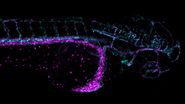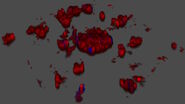Key Learnings
- How to perform quantitative analysis of 4 different markers during time-lapse imaging and show the precise spatiotemporal order of events during apoptosis
- How to increase the amount of data captured from one experiment using multiwell plates that enable multiple treatments to be samples at the same time
- How to keep the environmental conditions stable to ensure healthy controls are maintained when exploring the effects of drug treatment on cells
Speaker

Dr. Lynne Turnbull, Principal Scientist - Leica Labs @ EMBL Imaging Center
Lynne is a Principal Scientist at Leica Microsystems. She received her PhD in Sydney Australia in cardiac biophysics and undertook postdoctoral training in San Francisco and Melbourne. Lynne’s research interests shifted to bacterial biofilms and motility, and she used different types of imaging to explore and understand how bacteria build communities and move through their environment. Upon moving to the University of Technology Sydney, Lynne established and managed the Microbial Imaging Facility. Lynne joined GE in 2016 to provide application support throughout Asia for super resolution microscopy. Since 2021 Lynne has been with Leica Microsystems based in the labs at the EMBL Imaging Center in Heidelberg.





